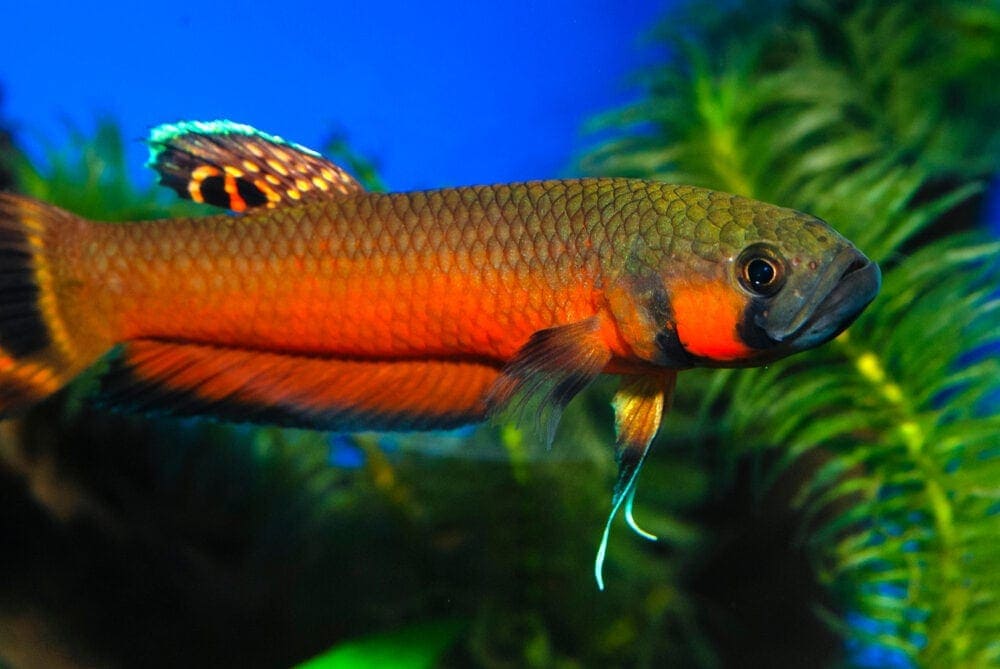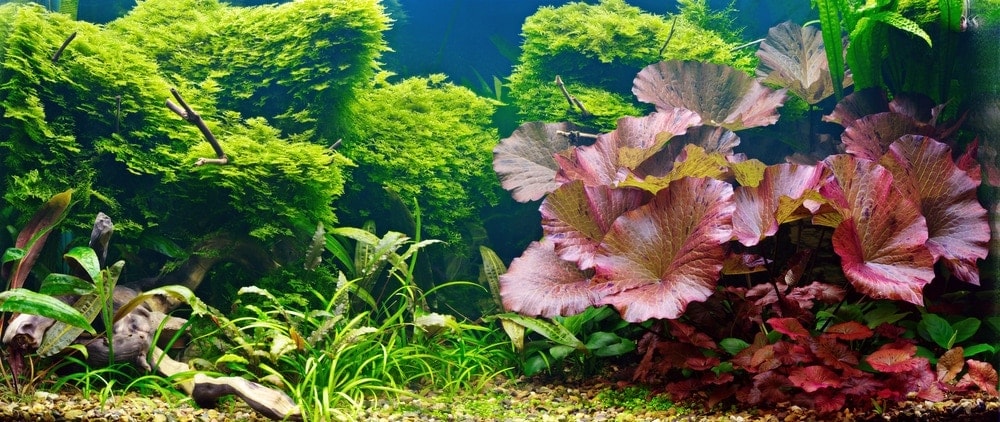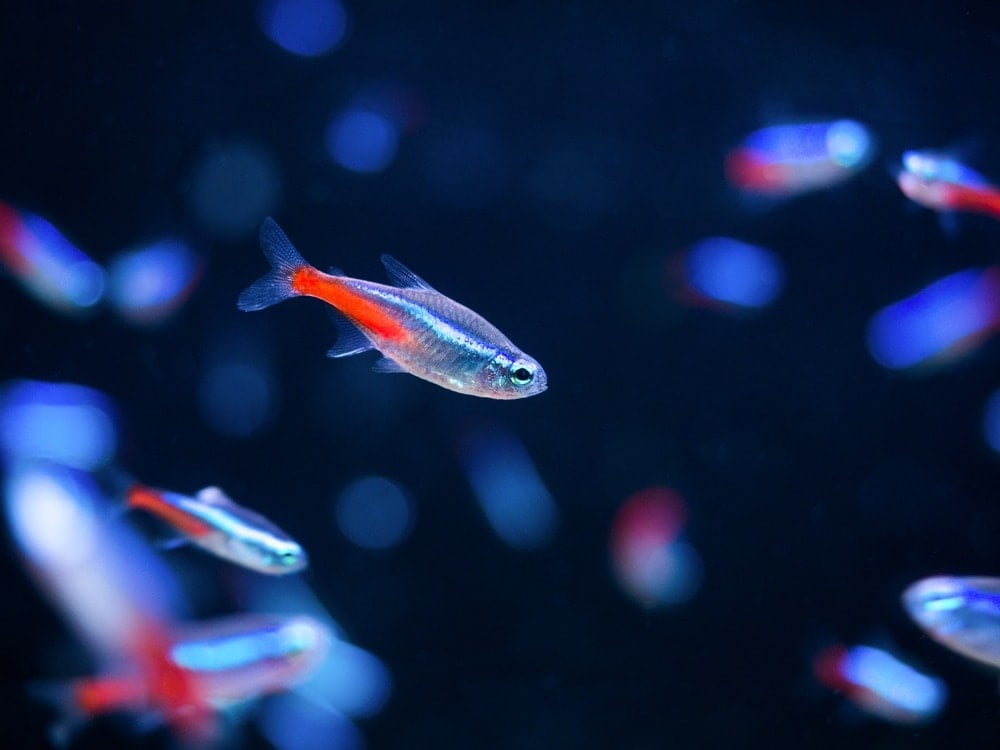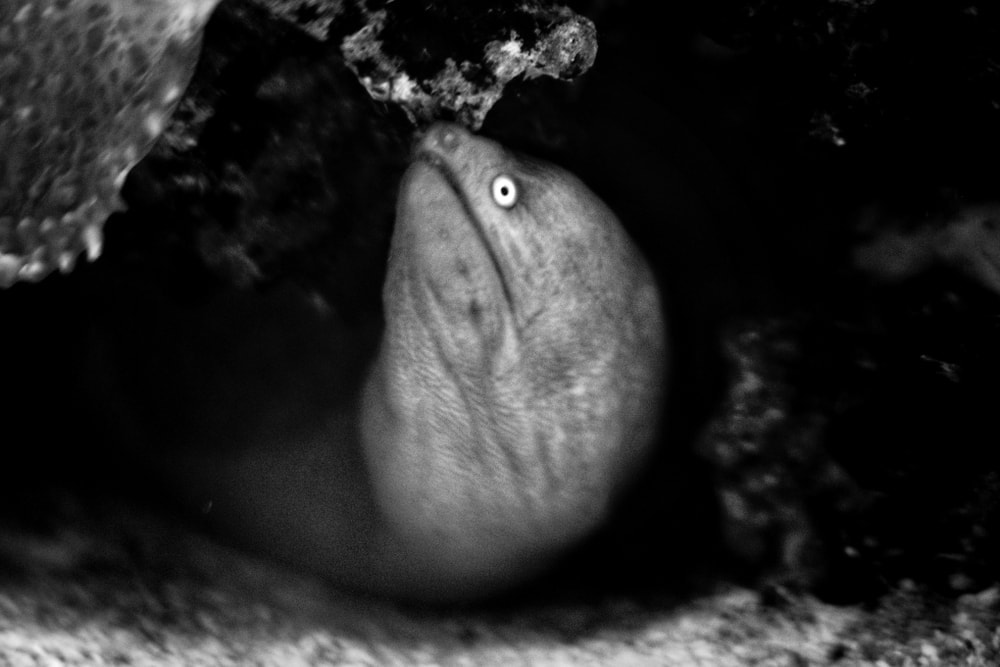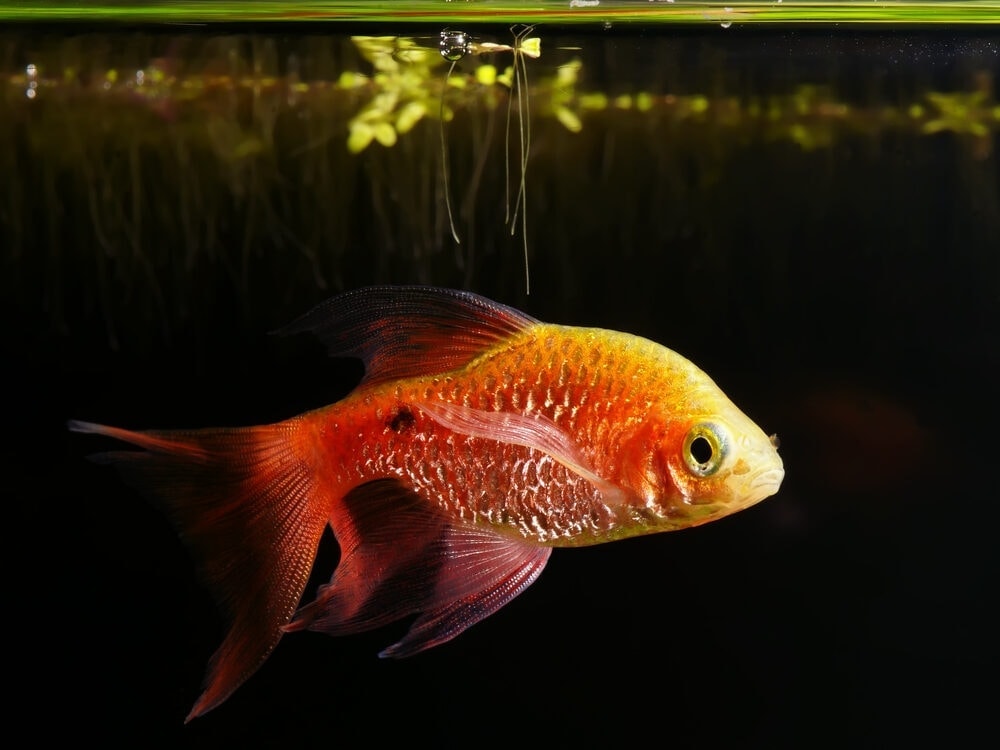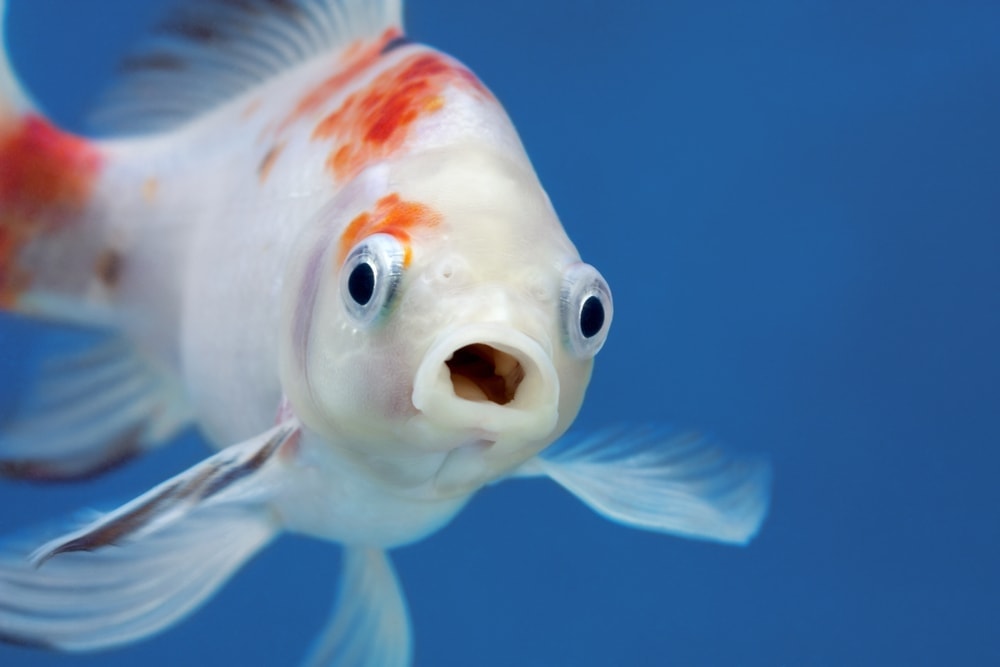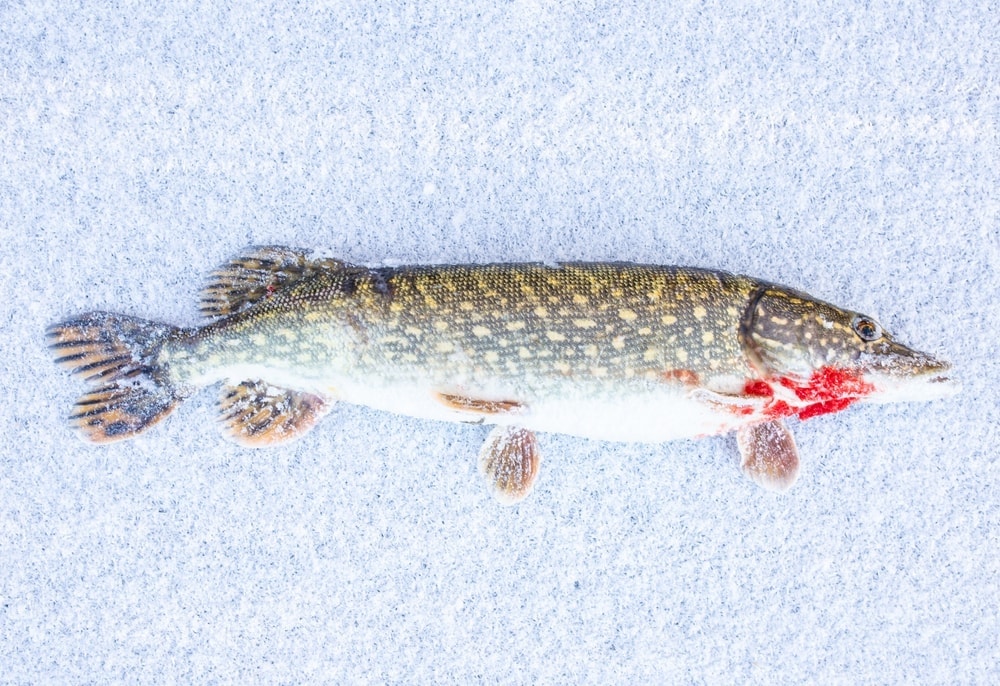The Betta Macrostoma is not a fish for everyone, but it does have a lot of amazing qualities that are worth considering.
These fish are suitable for those who have at least a moderate level of experience. If you are interested in getting this fish for your tank, you’ll need to learn a lot about it first.
Betta Macrostoma Appearance
These fish are known for their big gaping mouths, which are somewhat similar to that of the big mouth bass. They have an orange body with areas of black on their mouth, dorsal fin, anal fin, and tailfin. There is usually also a little black band around this fish’s neck. It definitely has a very interesting and unique look to say the least. Some of these fish even have white markings on their body when they are courting and spawning.
The average betta macrostoma grows to around 3.5 inches, though they can get as large as 4.3 inches long. Females have a silvery coloration that almost appears brown. There are two lateral bands that really stand out on these fish.
Behavior
If you want these fish to behave themselves, it is best to keep them in a school of at least six. The fact is that they tend to stay very peaceful when they are kept with their own kind. These fish are very active, preferring the middle and top parts of the tank. This is an excellent fish to watch swim around, and they are quite entertaining.
Natural Habitat
These fish are most commonly found in clear, lowland streams. They tend to spend most of their time in streams that have a lot of leaves around. They also gravitate towards areas that have waterfalls.

Betta Macrostoma Care Guide
1. Tank Setup
You can keep a pair of betta macrostomas in a 20 gallon tank, though bigger is always better. If you are going to house a school of fish, you should have at least a 40 gallon tank. These fish are very active, so you will have to give an adequate amount of space.
Make sure that the tank you keep these fish in has a good number of plants, caves, and pieces of wood along the bottom. Medium-size gravel is perfect for the substrate.
2. Water Conditions
You will need to keep the temperature of the water in your tank between 68 and 77 degrees Fahrenheit. It should also be kept at a pH of 6.5 to 7.5, and a water hardness rating of 1 to 10 Dkh.
It is imperative that these fish have a good amount of shade. You can accomplish this by getting a tank with smoked glass, which can be somewhat expensive. You also have the option of using a light that has a dimmer feature, which is a significantly cheaper option.
The water that your macrostomas are kept in should have a medium flow that isn’t too disruptive. It is a good idea to go with a sponge filter that features a water polisher. This will ensure proper circulation while keeping tannins at a safe level for your wet pets.
3. Betta Macrostoma Tank Mates
Unfortunately, you won’t be able to keep these betta macrostomas with other types of fish—only its own kind. They will likely bully and even injure any other foreign fish that you put in with them. It is just not worth taking the risk.
4. Betta Macrostoma Food
Unlike most other fish that are kept as pets, you shouldn’t give these ones any dry food whatsoever. Instead you can feed them live or frozen foods like glassworms, brine shrimp, mysis, or even krill. These fish need a good amount of protein in their diet to stay healthy. If you try to keep them on a diet of mostly dry food, they probably aren’t going to live very long.
Common Health Problems
These fish have a tendency to develop fungal infections, which can quickly become lethal if left untreated. It is also fairly common for them to get bacterial infections. If you see signs of such an infection, there are medications that you can add to your tank that usually work very well.
Cotton Mouth Disease is another common health issue that these fish have issues with sometimes. This particular condition is caused by bacteria, and it can be very serious. Some of the common symptoms include grey spots on the fish’s body, lesions on their back, and discolored scales.
A parasitic infection known as skin and gill flukes is another fairly common problem among these fish. It usually presents with labored breathing and redness on the skin. This infection can be caused by a previous illness, stress, or even overcrowding.
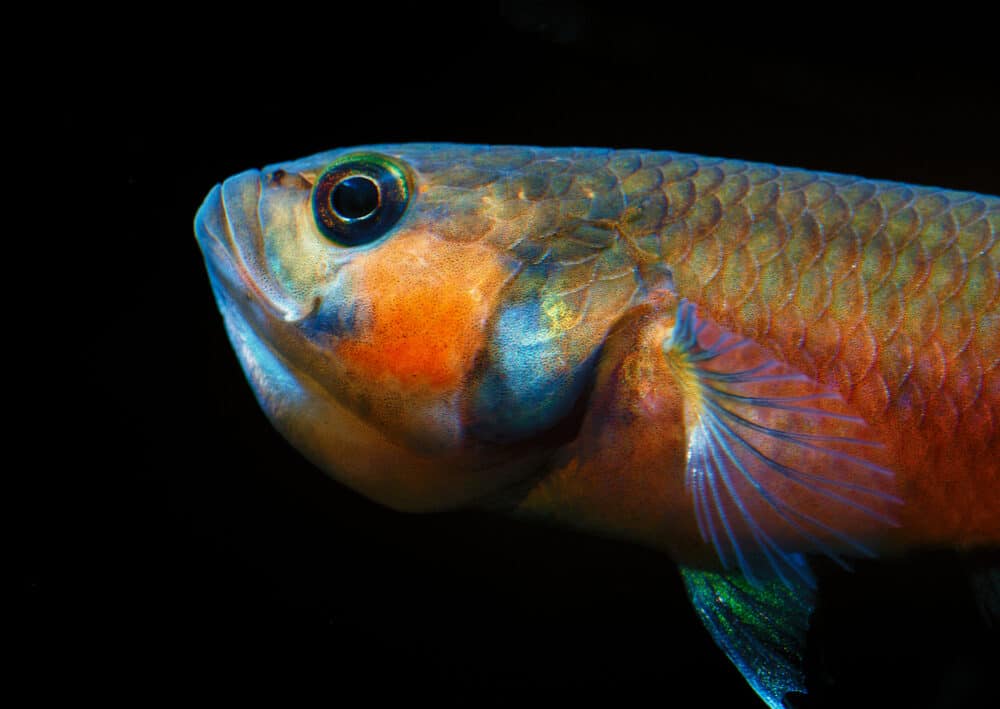
Betta Macrostoma Breeding
Breeding these fish can be a tricky endeavor to say the least. You will need to have a separate tank that is just for the two fish you want to breed. The temperature of the water should be slightly higher than normal. You also want to make a point of removing the parents once the eggs hatch. Otherwise there is a good chance that they will end up getting eaten.
Conclusion
- These fish are known for their big wide mouths, which resembles that of the big mouth bass.
- The bright orange-red coloration and areas of black make these fish very beautiful and vibrant.
- If you want the best behavior from these fish, you’ll want to keep them in a school of at least six.
- You can expect to see your fish swimming around a lot, usually at the top or middle parts of the tank.
- A 20-gallon tank is needed for keeping a pair of these fish. If you are keeping more than that, you will need a 40-gallon tank minimum.
- Keep the water in the tank between 68 and 77 degrees Fahrenheit at all times.
- A sponge filter is best for this tank setup, as it will help with preventing excess tannin accumulation.
- You should avoid keeping these fish with anything other than their own kind, as they will likely become very aggressive.
- Never give these fish dry food, but rather live or frozen foods like brine shrimp or krill.
- Bacterial and fungal infections can be problematic with these fish, so keep an eye on their appearance and behavior each day.
